In Love and War: An Interview with Lynsey Addario
Lynsey Addario shows up at Paul café in London in a pink coat and matching coral lipstick, her large brown eyes prominent and sparkling. It takes a moment to adjust to this, because so many images I’ve seen of this legendary photojournalist are from conflict zones and show her in drab, dusty gear—perhaps wearing a hijab if she’s in a Muslim country.
To put it mildly, Addario is a bit of a rock star in the photography world. She has photographed every major conflict since 9/11, has been kidnapped twice, and has won a Pulitzer Prize and a MacArthur fellowship, among other awards. She has been named one of the five most influential photographers of the last twenty-five years (American Photo, 2015), one of 150 Women Who Shake the World (Newsweek, 2011) and one of twenty women on Oprah Winfrey’s Power List (2010), and has been an inspiration to many younger women entering the field.
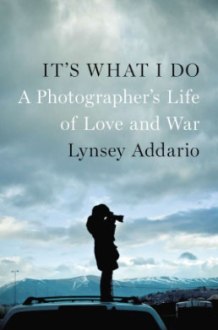 Now, to her many titles Addario can add one more: book author. Following her kidnapping in Libya in 2011, and the subsequent deaths of her friends and fellow-journalists Tim Hetherington and Chris Hondros in Libya, Addario decided to step back and process her experience by writing a memoir, It’s What I Do: A Photographer’s Life of Love and War, which was published to great acclaim earlier this year, and will be adapted into a movie by Steven Spielberg, starring Jennifer Lawrence.
Now, to her many titles Addario can add one more: book author. Following her kidnapping in Libya in 2011, and the subsequent deaths of her friends and fellow-journalists Tim Hetherington and Chris Hondros in Libya, Addario decided to step back and process her experience by writing a memoir, It’s What I Do: A Photographer’s Life of Love and War, which was published to great acclaim earlier this year, and will be adapted into a movie by Steven Spielberg, starring Jennifer Lawrence.
It’s What I Do traces Addario’s journey from a colorful childhood among Connecticut hippies to her current success, contrasting her rise in her career with struggles in her personal life. In an open and forthright manner, she writes about everything from her fear during mortar attacks to her dubious choices in love (“Lynsey only dates assholes,” a friend says at one point).
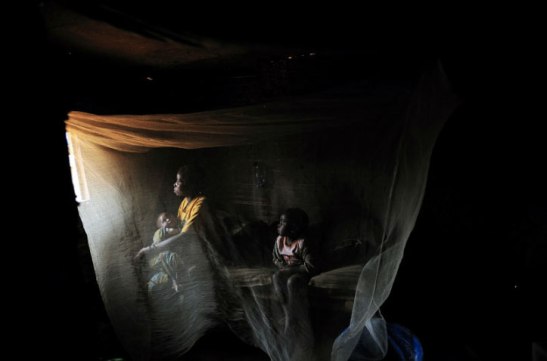
Kahindo, 20, sits in her tent with her two children born out of rape in North Kivu, Eastern Congo, 2008. Lynsey Addario/Getty Images Reportage
In person, Addario is as genial and down-to-earth as her writing. Her three-year-old Lukas makes a brief appearance before being whisked off to play, reminding me that Addario has now become that rare animal, the successful working mother. This, too is something she writes about—dwelling particularly on her fear, when pregnant, that editors would no longer give her work. (“I had fought hard to reach a place where I had a consistent stream of assignments, and I wanted to make sure that I wasn’t written off with the girth of my belly,” she writes.)
Though some things changed after Lukas’s birth—she now avoids the frontline and takes shorter assignments—Addario’s bravery and tenacity, and her commitment to promoting women’s rights, remain the same.
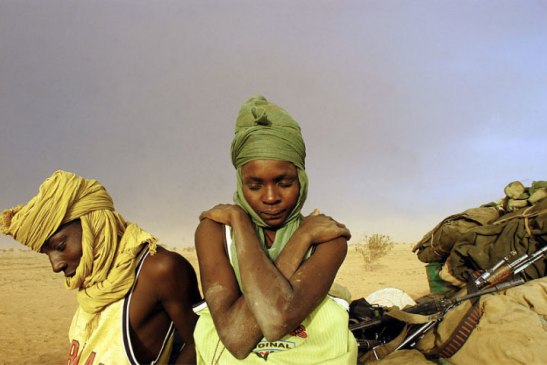
Soldiers from the Sudanese Liberation Army wait by their truck during a sandstorm, Darfur, Sudan, 2004. Lynsey Addario/Getty Images Reportage
How has it felt to get attention for your writing rather than for your photographs?
It’s strange. I feel like a total narcissist—I’m not used to talking about myself! But I think that even though the attention is because of the book, people still want to talk about the photographs.
In the book, you balance your writing about your career with more personal material. How did it feel, putting that out in the world?
You know, I’m a pretty open person. I’ve always been candid about my personal life and my professional life, and the issues I’ve had. I feel it would be hypocritical not to do that, because as a journalist I walk in and out of so many people’s lives, and I ask them about their most intimate moments. So in taking on the writing of the memoir, I knew I had to be candid. That said, the first draft of the book had nothing about my personal life. But my editor at Penguin, Ann Godoff, pushed me to include that aspect. She felt readers would want to know how a woman in this profession balances having a life outside of photography.
What was the impetus for writing a book?
After we were released from captivity in Libya, I knew I had to step back and process what we’d been through. I didn’t entertain any notion of stopping going to war zones or photographing, but I knew I needed to figure out how it would work going forward. My first thought was to do a photo book, and I happened to be meeting with Chris Boot and his team at Aperture when word came through that Tim [Hetherington] and Chris [Hondros] had been killed in Libya. My prints were literally spread out on the table when we heard, and there were prints from the Korengal Valley, where I’d spent a lot of time with Tim. And oddly, my reaction to their death was worse than my reaction to my own kidnapping. I think trauma can take a while to work its way through the system. When I heard about Chris and Tim, it pushed me to ask why some of us had survived and others hadn’t. And suddenly, it didn’t seem right to do a photo book. I’d already been approached by literary agents who’d asked me if I wanted to write a memoir, because I was one of few women who did this work. And clearly I was open about talking about my experiences, because I’d done several interviews along with my colleagues about what had happened in Libya.
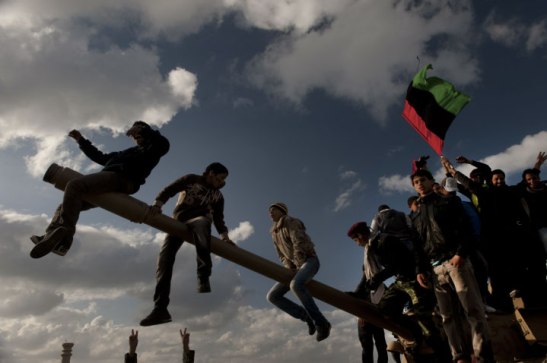
Libyans demonstrate against Colonel Muammar el-Qaddafi in Benghazi, February 26, 2011. Lynsey Addario/Getty Images Reportage
What was the writing process like for you? Did you have notes and journals you’d kept?
I had a lot of journals that I’d kept for many years, until probably 2003, when I started getting very consistent work and switched to emailing people close to me. I went back and looked at the journals, I printed out all the emails. I went back to my photographs and files–not looking at edited pictures, but at a whole day’s shooting, to see how I looked through the viewfinder. Doing that, I often saw how scenes had unfolded. I also interviewed colleagues and family members. And I sent the manuscript to many of the people who are in the book, just to get their take, you know, does this check out? Because we all remember things differently.
One of the fun things we find out about you in the book is that you grew up in a family of hairdressers, and that your home was a haven for transvestites, artists and misfits. So where do you think your curiosity for foreign affairs came from?
I have no idea! All I can say is that my parents were always encouraging us to explore and follow our curiosity. They never raised us with the notion of fear, and they were always empowering us to do whatever we loved and believed in, and not worry about the money we’d make. Now that I’m a parent, I think that’s incredible advice. I studied international affairs, and always wanted to do something that involved working with different cultures, but I didn’t know quite what. I was curious and passionate, and when I latched onto photojournalism, I realized its power to influence policy and the public.
You’re pretty much a self-taught photographer. Who helped you along the way, who were your mentors?
I moved to Argentina after college and spent a few years photographing for the local press there. When I came back, I showed my published prints to Joan Rosen at the Associated Press and she took me on as a stringer. There was a photo editor there, a Jamaican man called Bebeto, who really taught me about photography. He challenged my comfort zone by sending me, a small white woman, to cover black power rallies in the Bronx. When I came back, he’d look at my negatives and analyze them, saying things like, This is shit, take your flash off, get closer. He taught me to read a room, look for the light and be patient. In 1999 he gave me my first long-term assignment, to photograph transgender prostitutes in the Meatpacking District, which was a great opportunity.
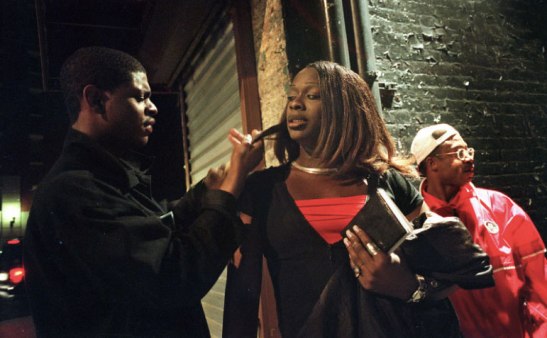
A transsexual prostitute and pimp in the Meatpacking District, 1999. Lynsey Addario/Getty Images Reportage
In 2000 you went to Afghanistan when it was under Taliban rule. What led you there, and what was that experience like?
I had moved to New Delhi, and my roommate there came back from a reporting trip to Afghanistan. He told me I should go and photograph women living under the Taliban. As a woman I could get access to places like women’s hospitals and private homes, where a male photographer wouldn’t have been able to go. Getting in to the country was challenging: I had to apply for a visa from the Afghan Embassy in Pakistan, then arrange for transport within Afghanistan. Once in the country I had to cover my head, and I was very conscious of the Taliban’s ban on photography. But you know, my philosophy has always been that if journalists are working there and you can get a visa, it’s okay to go. In Afghanistan, it was amazing to discover a place with such biblical landscape and incredibly hospitable people. Photographically, it was different from anywhere else I’d been.
You went on to photograph in a lot of war zones…
I never set out to be a war photographer; it was never in my sights. It just happened because I came of age after 9/11, and it was only natural that I’d want to document what happened in the world after that. I remember, four to five years into that coverage, suddenly thinking, Shit! I’m almost exclusively covering war.
How do you mentally prepare for the risk of a war zone, and what about when a situation turns dangerous? When you’re being forced to lie facedown at gunpoint?
At least a week before I go on any assignment in a conflict zone, I begin mental preparation. I speak with local journalists and fixers about the situation on the ground, with colleagues who have worked in that specific area recently, and try to update myself on the potential risks. The situation is often fluid during war, and I need to ensure I am aware of all the potential issues that may arise. Familiarizing myself with these things helps with mental preparation. As far as being held at gunpoint or kidnapped, I think there’s a survival mode that kicks in. My mind slows down into an almost catatonic state, where it’s all about enduring whatever I need to endure at that moment. In Libya, I was with very experienced colleagues, and we all knew not to panic. One reason we stayed alive is that we stayed calm.
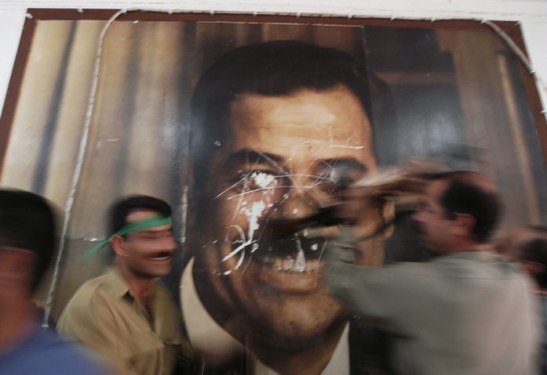
Hours after the fall of Kirkuk in 2003, Kurdish Peshmerga soldiers deface a poster of Saddam Hussein in a government building. Lynsey Addario/Getty Images Reportage
We’ve all seen wartime images of the stoic soldier, and the abandoned toy in the bombed-out building. Those have become clichés, or tropes: do you consciously try to avoid them?
It’s not always easy to break through that, but there are sometimes ways you can be more creative and think outside the box. In 2005, I was photographing in refugee camps in Darfur, Sudan. When I spoke to New York Times photo editor Kathy Ryan about how difficult it was to photograph there without resorting to clichés, she pushed me to be more creative, and I started experimenting with extreme close-ups, cropping and pulling things out of focus. Now, when I go in to a situation, I know I can shoot straight photojournalism, but I always have Kathy’s words in mind. Sometimes, if you photograph news in a more artistic way, you can bring people in.

In this 2005 image from Darfur, Sudan, an internally displaced woman rides her donkey through the Kalma camp in Nyala. Lynsey Addario/Getty Images Reportage
What do you think a good photograph can do that a written description can’t?
I think a good photograph has an immediacy that a written description might now have. A strong, powerful photograph may have the ability to bring a reader or viewer immediately to the heart of the story, or inspire a visceral reaction more quickly than a written passage can.
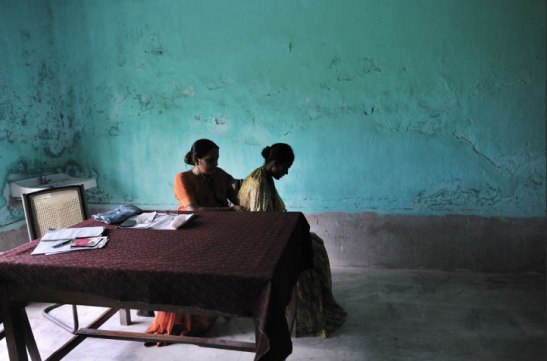
A doctor checks a patient for signs of tuberculosis in India, 2010. Lynsey Addario/Getty Images Reportage
There was a description in your book that I really loved, when you were talking about being in Kirkuk just after the fall of Baghdad, and you talked about how a presidential palace was raided and “chairs, couches, beds, and tables all appeared to be walking around the streets.”
Literally! That image is seared into my brain. There were lines of people, like ants, going from the palace doors and snaking around the grounds, just carrying away anything that wasn’t nailed down. It was an incredible thing to witness.
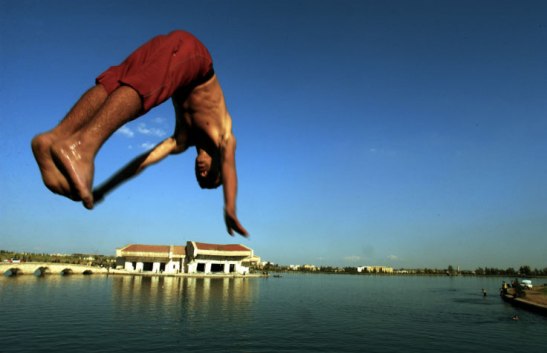
A boy dives into the water at a former palace of Saddam Hussein, Mosel, Iraq, 2003. Lynsey Addario/Getty Images Reportage
I can imagine that as a vivid scene in the movie adaptation. Your book has been optioned by Warner Brothers, and Jennifer Lawrence’s name has been attached to the project—so you’re going from text to film and memoir to something more plot-driven. How do you feel about that?
First of all, it’s completely surreal that anyone would think my life was interesting enough to make a movie of! It’s very flattering, and it’s also important for me because I feel that Hollywood can reach this massive audience that I can’t reach with my photographs. I hope that when and if the film does go into production, they include the themes that have been so important to me throughout my life, like injustices against women. And although it’s a film, which requires a lot of drama, I hope they’ll also include the quieter, non-news aspects of being a photojournalist, which are so important. Like the times I’ve spent just hanging out with regular people in all these countries.
You have a husband and son now, but in the book you write about your history of not-so-great relationships, which is a bit of an occupational hazard for foreign correspondents. Are you surprised it all worked out?
Constantly! I spent almost four years working for the Associated Press in New York, and I’d go anywhere on a moment’s notice—I left guys at the table on dinner dates! Then, as you say, I made some choices that were less than great. As a photojournalist you have to have the passion, the drive and the willingness to make sacrifices, and it’s hard to find the right balance, especially as a woman. Right before I met Paul, I had basically reconciled myself to spending my life alone. Thankfully I didn’t have to, and that’s just such a blessing.
———————————————————————————–
Click on the book jacket below to buy It’s What I Do:
8 comments on “In Love and War: An Interview with Lynsey Addario”
Leave a Reply
Connecting to %s

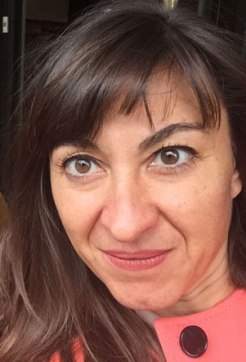
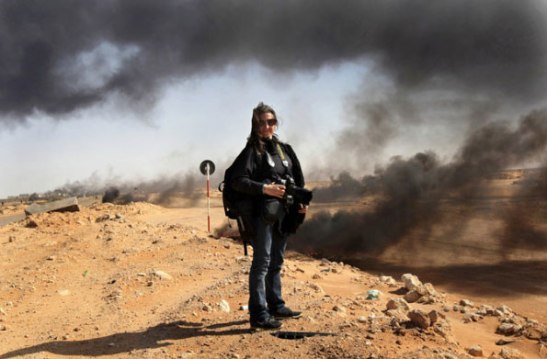
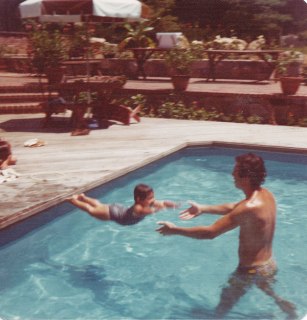
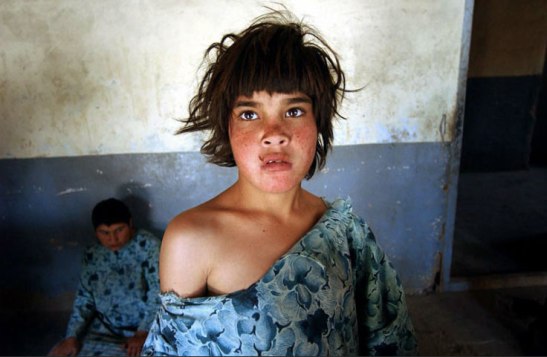
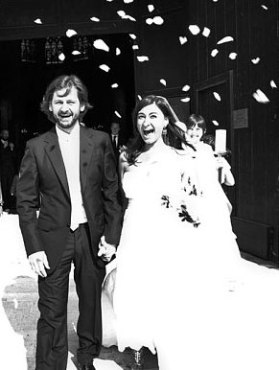


Sarah, What an incredible interview! I’m looking forward to reading Lynsey’s memoir. p.s. Really terrific questions! p.p.s. Do you know when the movie is going to be released?
Thanks, Robin. No news on a release date yet. But Addario chose the Spielberg/Lawrence combo over many other good options, including Natalie Portman/Darren Aronofsky and Reese Witherspoon’s production company. I think it’s sure to be a quality film!
All I can say is wow. Sarah, thanks for bringing this fascinating memoir to my attention. Of course, reading your interviews always leave me yearning for more. Lynsey – and hopefully her film adaptation – will definitely be on my radar.
She said “when and if the film” . . . . Did she seem pretty certain that the movie will be made? And specifically with the Speilberg/Lawrence team? I hope so. Thank you for sharing this interview with us. I admire her so very much 🙂 !
M U, I think she was being circumspect because the movie industry is so volatile, but as far as I can tell from what I’ve read, it’s a done deal — not just optioned but in development.
What a great interview. Thank you for bringing this fascinating woman to my attention! Rushing out to buy the book tout de suite :).
Hi Sarah, I just finished reading your interview with Lynsey Addario. I was very interested to see it because coincidently I just finished reading the book which I got for Christmas! She certainly has had a fascinating life. It should make a fabulous movie.
Your blog is excellent and you have done and continue to do so much good work yourself. I am impressed!!!!!!
love sabina
Thanks, Sabina! Glad you enjoyed the post.